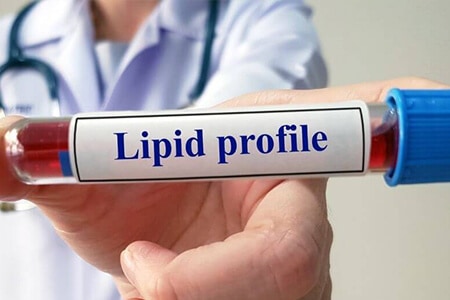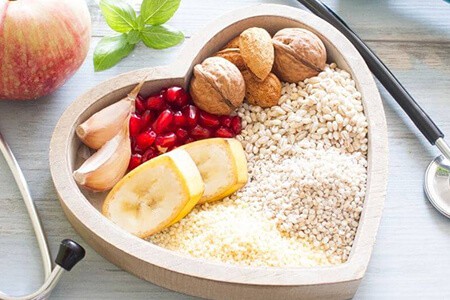Did you know that a research result published in 2019 by National Health & Morbidity Survey (NHMS) showed that four out of 10 people in Malaysia have high cholesterol? Out of this, one out of four are not aware of their condition.
What we do not know could hurt us. We want to help more mummies be aware and lead a healthy lifestyle, thus highlighting the topic on cholesterol. We may often be reminded to eat healthy and watch our cholesterol levels, but we may not have a full understanding of how to do so, and the risks of other serious health threats it brings.
Dr Benjamin Leo Cheang Leng, Consultant Internal Medicine Physician & Interventional Cardiologist from Columbia Asia Hospital – Tebrau, sheds helpful information on what we need to know all about cholesterol. Read on for in-depth insights and tips!
What is the guideline for healthy cholesterol levels, and do they differ by age or gender?
Many countries produce guidelines for management of cholesterol and Malaysia is no exception. Malaysian healthcare professionals generally follow the 5th edition of Clinical Practice Guidelines on the Management of Dyslipidaemia and the Primary & Secondary Prevention of Cardiovascular Disease that were released in 2017.
Dyslipidaemia (disordered lipid levels) has been well established as a Cardiovascular (CV) risk factor. It refers to the following lipid levels:
- Total cholesterol (TC) > 5.2 mmol/l
- HDL-C < 1.0 mmol/l (males) < 1.2 mmol/l (females)
- TG > 1.7 mmol/l
- LDL-C levels – will depend on the patient’s cardiovascular risk
The levels are not affected by a person’s age or gender. However, age and gender will influence a person’s overall CV risk, and this will in turn will determine the levels of cholesterol (especially LDL) that is acceptable for that particular person.
What are the symptoms of having high cholesterol?
Most people with high cholesterol do not experience any symptoms until cholesterol related atherosclerosis occurs and they get symptoms of a stroke or heart disease.
Some people develop cholesterol deposition around the eyes (xanthelasma), at the cornea (corneal arcus) and at tendons of the finger or achilles tendon (tendon xanthomata), elbows (tuberous xanthomata), palm creases (striae xanthomata) and buttocks (eruptive xanthomata).
Therefore, we shouldn’t wait for symptoms to occur before checking our lipid (cholesterol) levels.
At what age do people usually check on their cholesterol, and how often should checks be done?
The Guidelines encourage the screening of all adults above 30 years of age. These individuals should have a complete lipid profile (TC, LDL-C, HDL-C and TG). The presence of other cardiovascular risk factors (such as blood sugar, blood pressure (BP), weight, smoking status, physical inactivity) should also be determined and the individual counselled appropriately.

However, individuals who are at high risk of developing cardiovascular disease (CVD) should have a lipid profile earlier in life (> 18 years of age). This includes individuals with a family history of premature CVD, genetic dyslipidaemias, metabolic syndrome, diabetes mellitus (DM) and abdominal obesity.
How often the checks should be done depends on the global risk, and whether treatment is initiated. If medications are given, it is recommended to recheck in 3 months to track efficacy of the treatment.
Young low risk individuals should check lipid profile every 4 years. Those older or at higher risk should check yearly.
What precautions can one take if high cholesterol runs in the family?
If high cholesterol runs in the family, do have a blood test to test for complete lipid profile. (TC, LDL-C, HDL-C and TG) and get your global cardiovascular risk assessed. This will guide the management of the high cholesterol.
Start implementing Therapeutic Lifestyle Changes like adhering to a healthy diet, regular exercise, avoidance of tobacco smoking and maintenance of an ideal weight. These remain critical components of health promotion and cardiovascular disease risk reduction.

What makes our cholesterol levels go up?
Our body naturally produces the cholesterol it needs. An unhealthy lifestyle makes our body produce more cholesterol than it needs. This is the cause of high cholesterol in most people.
However, there are some people who inherit genes from their parents that cause them to have high cholesterol (Familial/hereditary hypercholesterolaemia). The severity of the Familial hypercholesterolemia is related to the duration and degree of the LDL cholesterol in the blood.
As mentioned before, high levels of cholesterol can lead to atherosclerotic heart disease and stroke.
What are some of the risks and diseases that can be caused by high cholesterol?
High cholesterol increases the risk of atherosclerosis (narrowing of the arterial blood vessels) and developing other medical diseases. The diseases occurring depends on which vessels are narrowed or blocked.
The main risk associated with high cholesterol is the increased risk of coronary heart disease. This occurs when there is cholesterol deposition at the arteries (atherosclerosis) causing the arteries of the heart to be narrowed or blocked.
This can result in angina (chest pain) when not enough blood flows to supply the muscles of the heart, or a heart attack, when the blood vessel is blocked completely and the heart muscles do not get blood supply and die.
If the blood vessels of the brain is involved, a stroke could occur. Part of the brain cannot get the blood supply and oxygen it needs and this will result in part of the brain dying (stoke).
Peripheral arterial diseases (blood vessels that are outside the heart and brain) can occur as well. Again, atherosclerosis affecting the blood vessels in the body can affect the blood supply to the leg and feet and other organs like the kidneys. This could result in pain at the legs and kidney failure.
Type 2 diabetes is also linked to high cholesterol. People with diabetes tend to have higher levels of Triglyceride (TG), lower levels of HDL cholesterol and higher LDL cholesterol.
High blood pressure is also linked with high cholesterol. When there is atherosclerosis, (arteries becoming narrow and hardened), the heart has to strain harder to pump blood through the diseased arteries. Blood pressure could be higher then.
How is high cholesterol treated and how quickly can it return to normal?
The first step is to encourage Therapeutic Lifestyle Changes, i.e.:
- adhering to a healthy diet
- regular exercise
- avoidance of tobacco smoking
- maintenance of an ideal weight
This advice not only reduces cholesterol but reduce overall cardiovascular disease risk as well.
It generally takes between 3 to 6 months to see the effect of exercise and diet on cholesterol.
The effect of medication on cholesterol is faster, at 1 to 3 months.
What kind of medication is usually prescribed to treat cholesterol? Are there any side effects?
There are a few lipid modifying drugs that are used to treat high cholesterol. Each class comes with its own benefits and side effects.
The most commonly prescribed class of drug is the HMG-CoA Reductase Inhibitors (Statins). The common side effects are myopathy and increased liver enzymes.
There is also a small increased risk of new onset diabetes.
The other medications used and their properties are listed in the table below.
Drug Class | Lipid Effects | Side Effect | Contraindications |
|---|---|---|---|
HMG-CoA Reductase Inhibitors
(Statins) | LDL-C ↓ 21-55%
HDL-C ↑ 2-10%
TG ↓ 6-30% |
| Absolute:
|
Fibric-Acid Derivatives
(Fibrates) | LDL-C ↓ 20-35% (Fenofibrate)
HDL-C ↑ 6-18%
Primarily TG ↓ 20-35% |
| Absolute:
|
Proprotein convertase subtilisin/
kesin type 9
(PCSK 9) inhibitors | LDL-C ↓ 48-71%
Non-HDL-C ↑ 49-58%
TC ↓ 36-42% |
| Absolute:
|
Bile-Acid Sequestrants
(Anion exchange resins) | LDL-C ↓ 15-25%
HDL-C ↑ 3-5%
TG / ↑ |
| Absolute:
|
Nicotinic Acid (Niacin) | LDL-C ↓ 10-25%
HDL-C ↑ 10-35%
TG ↓ 20-30% |
| Absolute:
|
Cholesterol Absorption Inhibitors | Primarily LDL-C ↓ 10-18% (monotherapy)
In combination with (a) statins: Additional ↓ 25%
(b) fenofibrate: ↓ 20-22% |
|
Fish oil
Fish oil may be useful in the treatment of elevated triglycerides but it is not a replacement for statins in the treatment of elevated cholesterol.
Co-enzyme Q10
There is no definite evidence to support the use of Co-enzyme Q10 on the reduction of cholesterol levels and primary prevention of cardiovascular disease.
Red yeast rice
Red yeast rice contains substances that are structurally identical to statins. However, unlike statins, there are no data on its safety in long term use.
Coconut oil
Virgin coconut oil or coconut oil may worsen lipid profile. Its use is not supported by robust scientific evidence when taken on its own. If coconut oil is used as part of a daily eating plan and/or in food preparation, it is recommended that it be used within the context of a healthy dietary pattern
What are foods that are high in cholesterol that we need to be mindful of?
Although the role of serum cholesterol (especially LDL cholesterol) in the pathogenesis of atherosclerosis and cardiovascular disease is strong, the contribution of dietary cholesterols to blood cholesterol levels is more controversial.
Data does indicate that the impact of dietary cholesterol on serum cholesterol levels is weak. However, many high-cholesterol foods also contain high levels of saturated fats (SFA).

This includes dairy products, meat (especially beef and pork) and most processed foods. For this reason, international lipid guidelines recommend limiting dietary cholesterol to < 200 mg/day in secondary prevention.
To reduce trans fatty acid, we should minimise consumption of high fat processed meat (sausages, corned meat, nuggets, salami, burger, pepperoni, ham, serunding, etc.) and bakery products including cakes, biscuits, frozen pizza, cookies, crackers, and hard margarines and other spreads.

Below is a table on the recommended intake of various food groups.
Nutrition | Comments |
|---|---|
Nutrition Comments
Total Fats | 20 – 25% with an upper limit of 30% of total energy |
Saturated fat (SFA) | < 10% of total calories.
SFA should be replaced by:
|
Dietary cholesterol* | Keep to < 200 mg per day.* High cholesterol foods also contain high levels of SFA (e.g. meat, organ meats, full cream dairy products and some processed foods). |
Carbohydrates (CHO) | Total CHO 50 – 60% of total calories intake with emphasis on whole grains. To reduce intake of refined CHO foods e.g. white rice. In the presence of High TG and low HDL-C, CHO intake should be lower. |
Protein | 15 – 20% of total calories intake with emphasis on vegetable protein. |
Omega-3 fatty acids* | 2 – 4g per day from food and/or supplements in patients with hypertriglyceridemia |
Dietary fibre | Incorporate fibre-rich foods that contribute at least 20 to 30g of fibre per day. Emphasis should be on soluble fibre sources (7 to 13g) such as fruits**, vegetables**, whole grains, high-fibre cereals, oatmeal, legumes and beans. |
Plant sterols and stanols | 2 – 3g per day. These include fortified milk, wheat germ, wheat bran, peanuts, vegetable oils (corn, sesame, canola, and olive oil), oats***, almonds and food supplements. |
*this applies to patients with Very High and High cardiovascular risk.
**Juicing removes fibre from whole fruits and vegetables, thus it is not recommended
***Adding ≥3 g (Oat/bran/grain)/d to the diet reduces LDL and total cholesterol by 0.25 mmol/L and 0.30 mmol/L, respectively, without changing HDL cholesterol or triglycerides.
What sort of lifestyle changes may improve our cholesterol levels?
We should implement therapeutic lifestyle changes in our lives.
Regular exercise should be an important part of our lives. Regular exercise reduces the risk of all-cause and cardiovascular disease mortality in both healthy individuals and patients with cardiovascular disease by 20–30%.
Studies show that regular aerobic exercise can increase HDL-C by 3–10% (up to 0.16 mmol/L) and reduce TG by about 11% (up to 0.34 mmol/L).
This should involve at least 150 minutes a week of moderate aerobic or 75 minutes a week of vigorous aerobic exercise.
Smoking is a strong and independent risk factor for cardiovascular disease. It accelerates coronary plaque development and may lead to plaque rupture. Smokers tend to have a higher TG and lower HDL-C.
There is significant reduction in cardiovascular morbidity within the first six months of smoking cessation. The risks of cardiovascular disease decreases gradually after smoking cessation and reaches that of non-smokers after 10-15 years. This benefit occurs independent of its effect on lipids. We should avoid tobacco smoking and passive smoking.
We should maintain an ideal weight, achieving a Body Mass Index (BMI) < 23 kg/m2 or at least 5-10% reduction in body weight over 1-2 years. Maintain a waist circumference of < 90 cm for men and < 80 cm for women.
These steps are critical components of health promotion and cardiovascular disease risk reduction.
This article first appeared in Motherhood.com.my, 27 February 2022.
Share:
Was this article helpful?
Share:
Was this article helpful?
Health Packages
Elevate your health with tailored health packages at Columbia Asia Hospital. Take charge of your health journey today.
Pink October 2024
From
RM80

